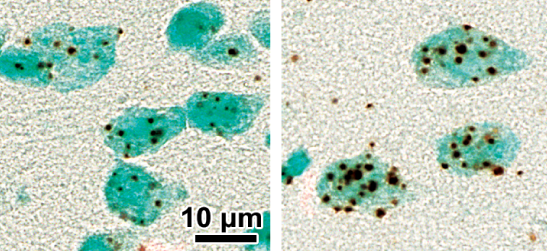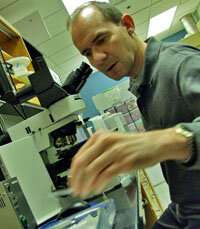
Alterations in the balance of two chloride ion transporters may be responsible for cognitive deficits in schizophrenia, according to a Northwestern Medicine study published in Science Advances.
These alterations cause the most important inhibitory current in the brain, called GABAA, to become excitatory. Inhibiting the transporter activity with bumetanide, an FDA-approved diuretic, rescued cognitive symptoms in mouse models of schizophrenia.
“To our surprise, it completely reversed deficits on three different tests of cognitive performance,” said Marco Martina, MD, MsC, Ph.D., associate professor of Physiology and senior author of the study.
Herbert Meltzer, MD, professor of Psychiatry and Behavioral Sciences, Pharmacology and of Physiology, was a co-author of the study.
GABAA is the major inhibitory current in the adult brain. GABAA currents help maintain inhibitory-excitatory balance in the brain along with excitatory neurotransmitters such as glutamate. However, in early development and until about two years of age in humans, GABAA is excitatory.
The polarity of the GABAA-mediate current is determined by the balance of two chloride transporters: NKCC1 and KCC2. Early in development, when NKCC1 is more prevalent, the net effect of the transporters is to import chloride and thus the GABAA current is depolarizing and results in excitation. However, after the first two years of life, more KCC2 transporters develop and the intracellular concentrations of chloride ions decreases, so that the GABAA current becomes inhibitory.
Previous studies, including those from Meltzer’s laboratory, have pointed to the GABAA current’s influence in cognitive symptoms of schizophrenia such as poor short-term memory, but the results were often inconsistent, according to Martina.

“Some reports suggested increased GABA signaling caused symptoms, some reported that decreased GABA was the culprit, but nobody looked at the possibility of depolarizing GABA,” said Martina, who is also an associate professor of Psychiatry and Behavioral Sciences.
Examining a mouse model of cognitive symptoms of schizophrenia, Martina and his collaborators found that the GABAA current was indeed excitatory in adult mice, in a small region of the prefrontal cortex. In normal mice, the number of NKCC1 transporters remains static throughout adult life, but these mice modeling cognitive impairment in schizophrenia had many more channels compared to normal mice.
Attempting to reverse the cognitive symptoms in the mice, the investigators gave these mice bumetanide, a diuretic that inhibits NKCC1. Mice treated with this drug did much better on cognitive tests compared to mice who were untreated. Another experiment, this time using a viral construct to selectively reduce expression of NKCC1 in the cortex, also produced improved cognitive performance, demonstrating that the imbalance in chloride transporters could be a significant contributor to the cognitive symptoms in schizophrenia.
This was supported by the biology of the channels. Other ion channels, such as potassium or sodium channels, have a large difference between their equilibrium potential and resting potential. This means that unless the concentration of ions inside or outside the cells changes drastically, the overall polarity of the currents will not change.
However, chloride channels are much more sensitive because a polarity switch is built into normal development, according to Martina.
“Most biological mechanisms might have redundancy mechanisms built in, but these chloride channels are engineered to change at a certain stage of development,” Martina said. “Therefore, any pathological disturbance may end up affecting polarization.”
Further, Martina said he believes this mechanism may be present in other disorders with cognitive deficit symptoms as well, and plans on examining autism-spectrum disorders for any changes in GABAA polarity.
Source: Read Full Article



